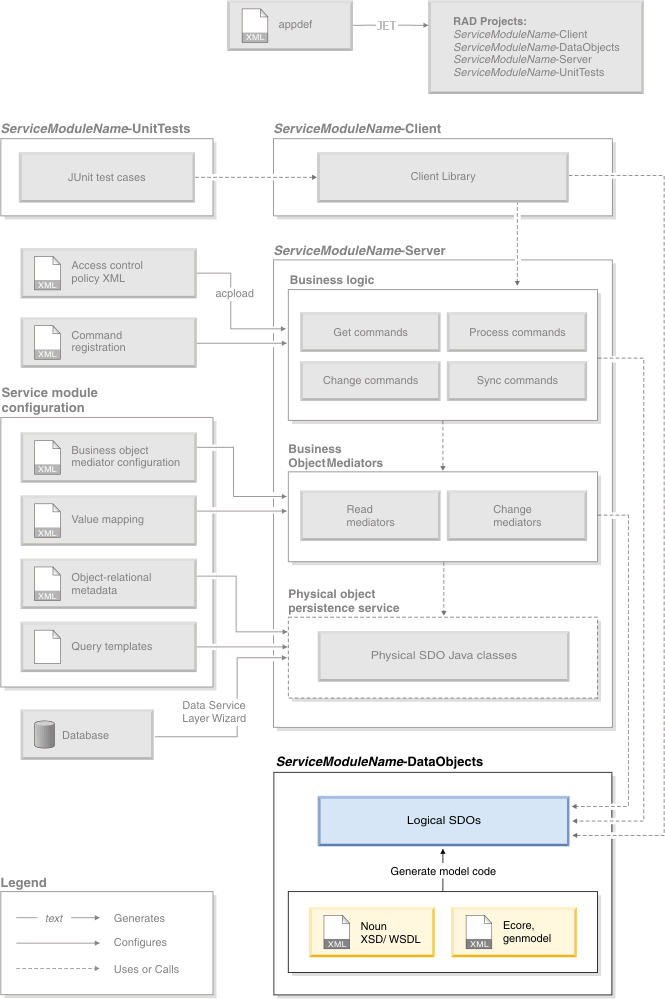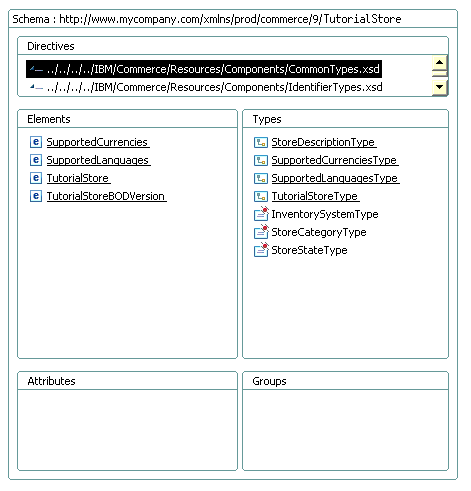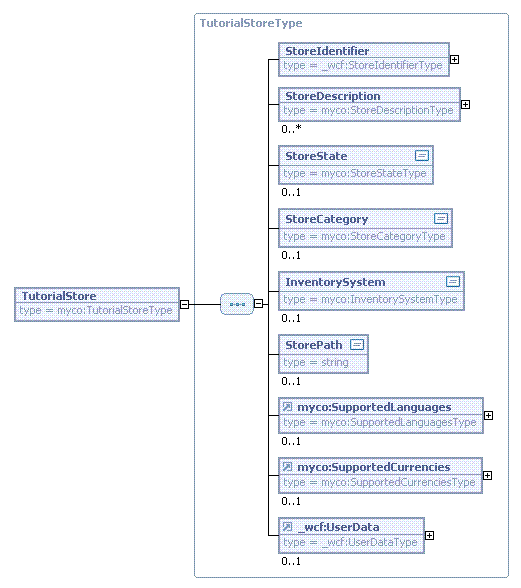Tutorials > Program model > Web services > Create a new WebSphere Commerce BOD service module
Define the TutorialStore noun
Any service that uses an XML schema requires a logical model definition. For WebSphere Commerce, the logical model is represented as a noun.
To reduce complexity, WebSphere Commerce uses its own simplified nouns, defined types, and primitive XML schema types, rather than using the nouns and base types provided by OAGIS.
Nouns define the name of each data element in the logical model, and assign that name to a data type. This data type may be a primitive XML schema type like Boolean, or you can define a complex type. A complex type is a construct of data elements like CurrencyType which contains price (represented by a double type) and currency (represented as a string). WebSphere Commerce provides some predefined complex type constructs which are shared among all of the nouns.
The noun that you are going to be defining in this tutorial is called the TutorialStore noun. This noun represents the logical data model of the new component that you are going to create. The definition of this logical model is a key development step as this model is exposed to any client wishing to use the TutorialStore service, for example JUnit, and WebSphere Portal.
You can see the noun XSD file, highlighted in the context of the overall process of creating a service module below:

For the purpose of this tutorial, the TutorialStore noun has already been predefined for you.
In this step of the tutorial, review the following:
Procedure
- The schema definition for the TutorialStore noun
- The noun structure for TutorialStore:
- The XSD for the noun: TutorialStore.xsd
Lesson checkpoint
In this step, you reviewed the logical data model for the TutorialStore noun definition with the provided TutorialStore.xsd. Your next task is to use the Java Emitter Template (JET) to generate the base code for the TutorialStore component.

